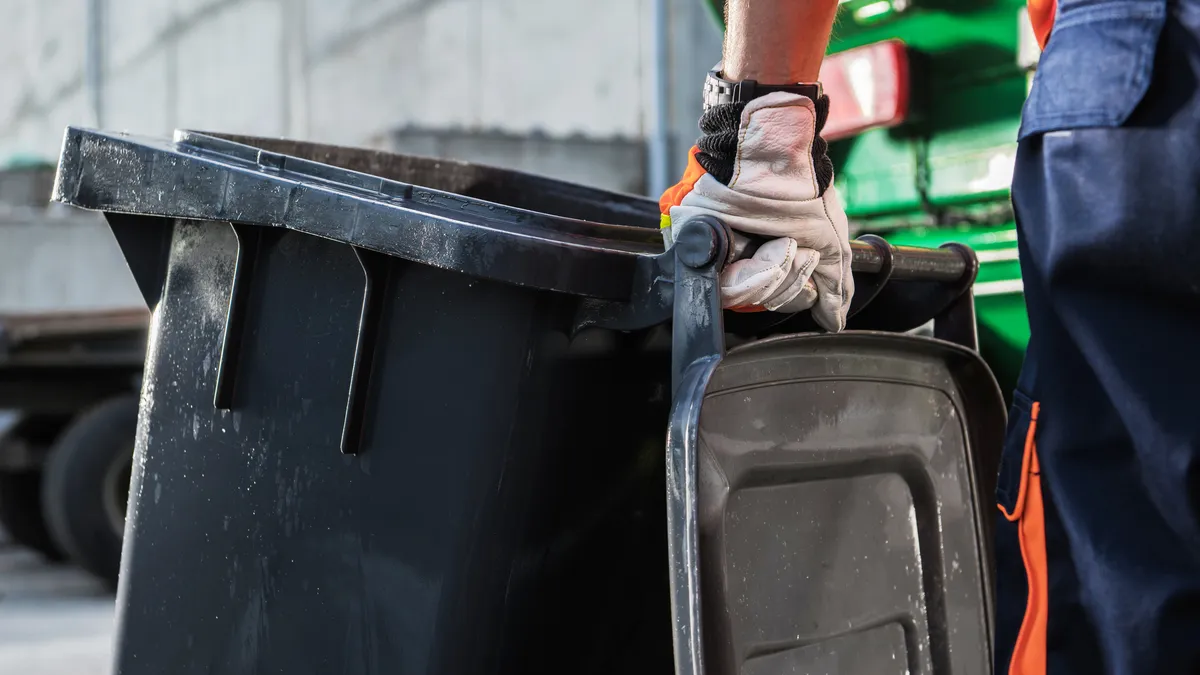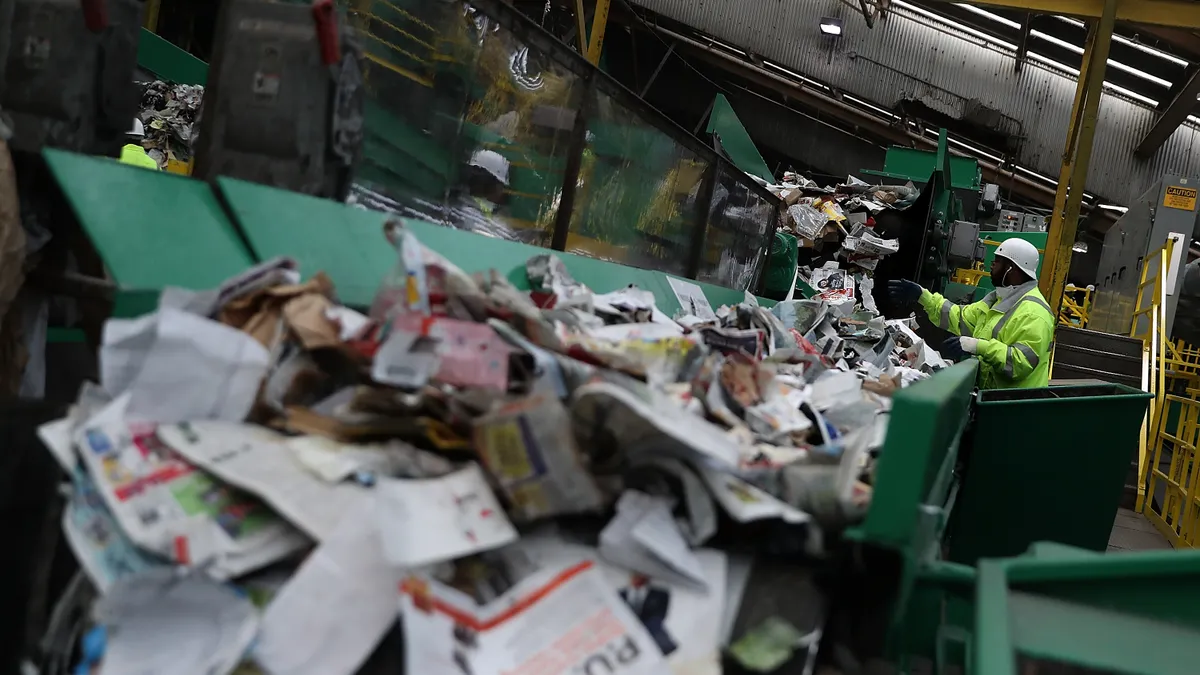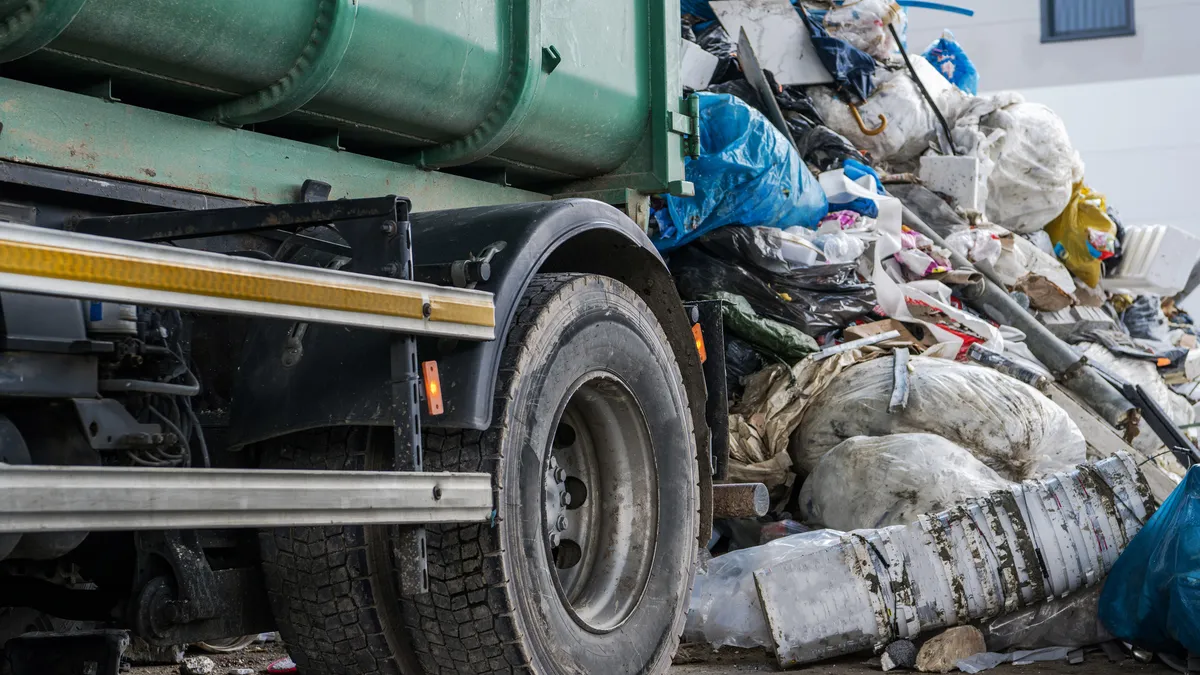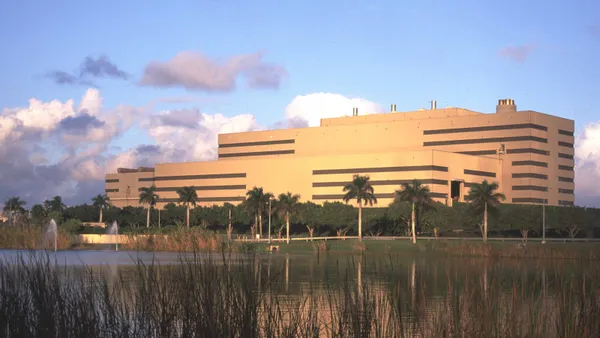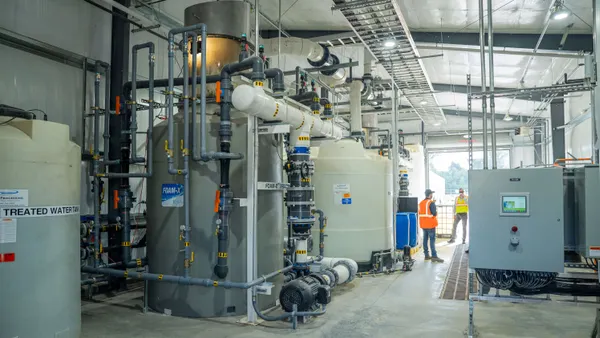Plastics debates, climate risks, biogas opportunities, fleet developments, environmental justice action and still more M&A: The Waste Dive team is looking ahead to some of the most complex trends that are expected to play out in 2023.
These are among many industry issues with possible inflection points this year. We’ll also continue to focus on broader economic trends, workforce issues, PFAS, the evolution of organics recycling and other important topics.
We invite you to share your thoughts on these trends, or highlight other issues you’ll be following, via email at waste.dive.editors@industrydive.com. Please also join us for a live, virtual event on Jan. 24 to hear from top industry executives and policy experts about what they’re focusing on in the new year.
The impact of industry consolidation unfolds
The waste industry’s multiyear acquisition trend is expected to continue into 2023 for many of the same reasons that have been driving it to date. Labor and supply chain challenges, exacerbated by the pandemic, have made it harder for smaller operators to keep up. Plus, increasing numbers of private equity buyers or investment funds driven by ESG considerations are looking to expand in a recession-resilient market.
At the same time, industry sources believe the number of new companies may be declining due to the high capital requirements for entering the market and the operating fatigue driving others to sell. If this trend persists, and existing players continue to consolidate market share (especially on the post-collection side), the question becomes if or how the cost and variety of services being offered will change.
Will this trend of ongoing acquisitions ultimately lead to notable changes in how material is being managed, or will it just direct the same amounts of waste to a smaller number of disposal sites? Will it lead to a modernization of collection technology and improved service, or higher costs for customers to receive similar service? And as the industry’s emerging group of mid-sized regional players continues to grow, who will they buy (or sell to) along the way?
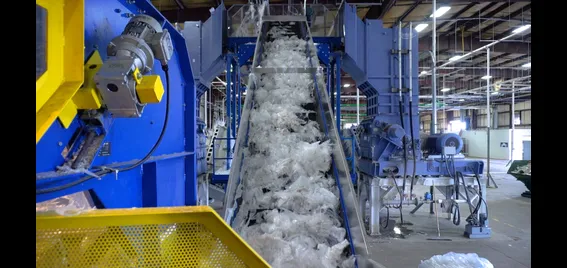
The debate over plastics comes into focus
Plastic is one of the most controversial materials in recycling right now, and 2023 will be a year that could further polarize the industry while possibly showing signs of viability for new and emerging business ventures.
One question to tackle is which types of plastic are truly recyclable. California is expected to continue its rulemaking processes this year to determine the recyclability and labeling of certain plastic packaging. Oregon has already issued its “truth in labeling” report as part of an ongoing extended producer responsiiblity implementation strategy. These statewide decisions could affect future markets for plastic packaging materials and spur MRF operators and haulers to change how they operate. The Federal Trade Commission is also expected to start collecting public comments in January on how to update its Green Guides, a document about how to market environmental claims without being deceptive.
Policy experts anticipate numerous pieces of legislation this year aimed at curbing, eliminating or regulating plastics. That could also include new EPR for packaging bills. State lawmakers are likely to introduce EPR bills with provisions unique to their state’s dynamics around recycling infrastructure, meaning there could be versions of bills that also borrow from the diverse provisions in Oregon, Maine, Colorado and California’s existing laws.
Chemical recycling will come further into focus in 2023 through potential regulations and business decisions. Michigan recently became the 21st state to pass a law reclassifying chemical recycling as a manufacturing process instead of waste management. Proponents see this legislation as a key business opportunity and an outlet for plastics that typically go to disposal. Yet environmentalists say the technologies don’t cut plastic production and promote pollution in overburdened communities.
Industry players are also expected to take advantage of new or shifting regulations to build additional plastic business ventures in 2023, especially as brands continue to make pledges to use more recycled content. WM’s acquisition of Avangard last year and Republic Services’ investment in an integrated plastics recycling facility in Las Vegas are examples of haulers betting on the growing financial potential of recycled plastics. Others are budgeting for major equipment and facility upgrades to better separate typical plastics and future-proof against swings in plastic commodity markets.
Evolving fleets and keeping them functioning
Major waste companies continue to commit to and work on a range of sustainable fleet goals that suggest a greater tide toward compressed and renewable natural gas by the end of the decade. And announcements about pilots or orders for other alternative fuel vehicles like electric trucks by municipal or private haulers keep cropping up.
The Solid Waste Association of North America suggested this past year that, for now, collection fleets continue to lean on diesel and CNG trucks to power fleets. But it further advised pursuing replacements with renewable versions of these fuels once price competitive, while also investigating opportunities around operators’ “unique position of being able to generate both electricity and CNG from the solid waste that they collect.”
Meanwhile, keeping existing fleet assets up and running — diesel, CNG or otherwise — has been a feat of its own. But a shifting economy could help. Supply chain challenges in recent years intensified competition for new vehicles and contributed to lengthy delivery timelines. Similar slowdowns have beset fleet operators who want to repair trucks that are down, for whom parts and maintenance technicians may not have been readily available. Not having enough drivers has in some cases contributed to collection delays, but having trucks out of commission due to those repair limitations has also been a bottleneck. However, the coming year could see manufacturers catching up on those backlogs amid a potential cooling in the economy.
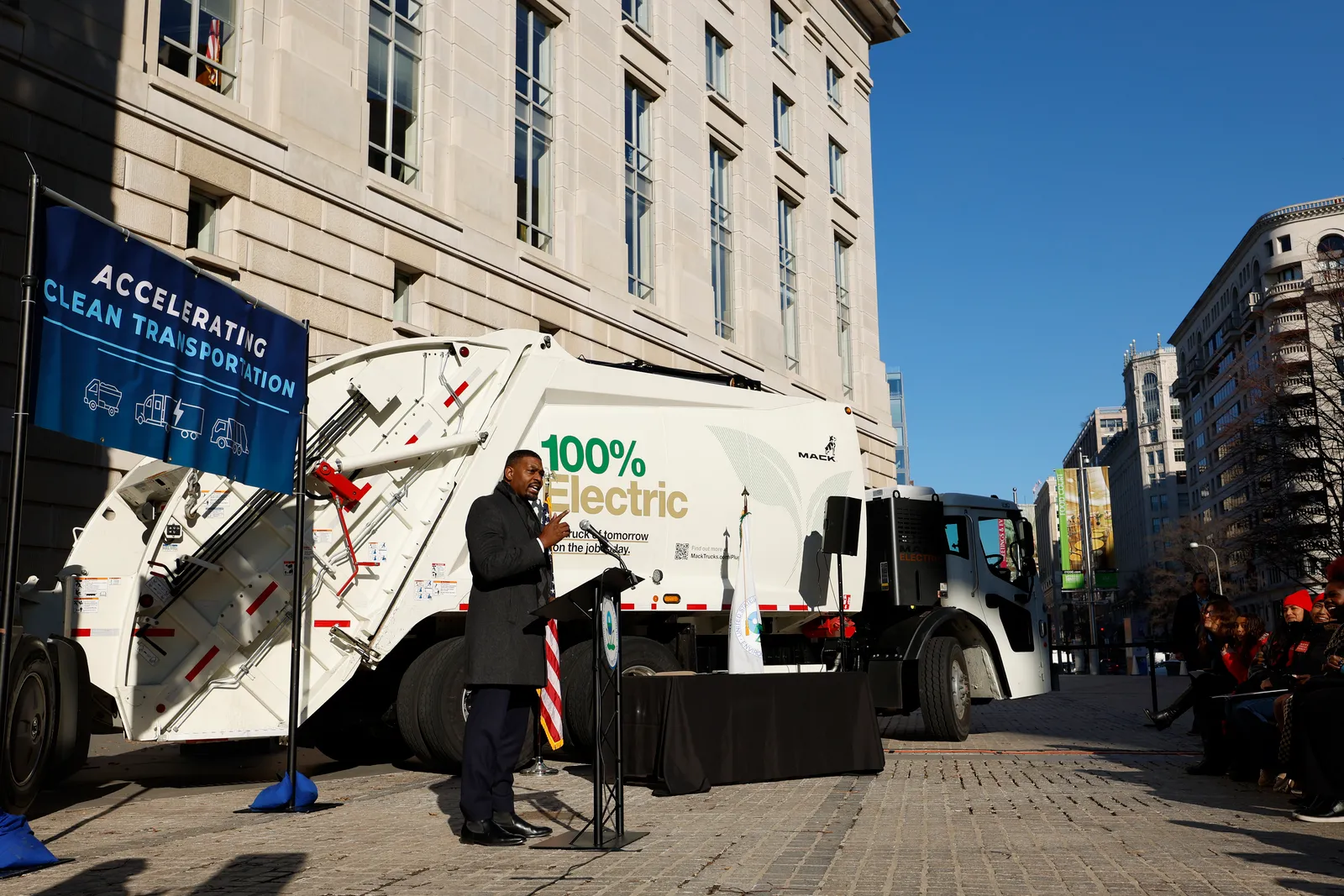
Environmental justice: Moving from plan to action
Activists in environmentally overburdened communities have been fighting against pollution for decades, and state and federal entities have started to catch up in recent years by passing environmental justice laws and directing more resources to the issue. Whether those investments have made a measurable or meaningful impact — and what that could mean for waste operations — could be a major topic in 2023.
New York Gov. Kathy Hochul signed a bill in December requiring the state's environmental permitting process to consider the cumulative impacts on disadvantaged communities when siting certain facilities, including those for waste or recycling. This follows a related 2020 bill in New Jersey, which many in the waste industry consider to be the country’s most notable and detailed EJ law. Activists in New York hope they now have added traction to fight pollution in their neighborhoods, while policy experts think more such bills could be introduced in other states soon.
Activists in Texas are likely to continue protesting what they say are systemic problems with the state’s landfill permitting system, an issue they see as a root cause of an illegal dumping investigation in Houston that the U.S. Department of Justice is leading. This year could reveal more details from that investigation — plus what it means for the DOJ’s role in future EJ concerns across the country.
The U.S. EPA has big plans for its new national office, opened last year with the intent of formalizing and prioritizing EJ concerns and enforcement, and hinted that more action could come in 2023. It’s also disbursing $100 million in funding for EJ initiatives through the Inflation Reduction Act. It’s too soon to know whether any of the grants — available to states, tribes and community-based organizations — will go toward initiatives involving impacts from the waste and recycling industry. EPA Administrator Michael Regan said it was important to offer funding directly to communities. “Those who experience environmental justice challenges know their community's concerns better than anyone else,” he said during a January briefing.
Adapting to unignorable climate risks and opportunities for resilience
Waste’s role in public and private sector sustainability targets has been discussed for years. But the impacts of climate change are showing up more in day-to-day collection and in how municipalities and other operators anticipate future risks. Just in the past month — on the heels of the third-costliest year on record related to climate disaster events — Buffalo, New York, and the Midwest experienced intense cold and snow, and California faced harsh flooding and mudslides.
In these situations, the disruptions to waste and recycling collection are real, given how disasters can affect individual employees’ homes and wellbeing as well as infrastructure at facilities. So too can hurricane winds and flooding wipe out carts, and snowstorms can result in trucks getting stuck.
Deliberate preparations are also happening. In New York, a proposed bill would compel the city’s Department of Sanitation to create an emergency and resiliency plan and prioritize collection in flood-prone areas ahead of heavy rainfall. Those challenges span all four seasons. Acknowledging the dangerous heat of summer, U.S. OSHA will continue to work this year on developing a workplace heat standard. Miami-Dade County in a recent extreme heat action plan said that, in the absence of federal and state action, it will pursue the nation’s first countywide heat standard for outdoor workers. And in Texas, Austin Resource Recovery has worked to try to secure a reliable air conditioning solution in its trucks to make them safe and tolerable for workers.
On the private side, evolving levels of sustainability reporting allow for discussion of physical climate risks. The nation’s second-largest hauler outlined future productivity loss risks it foresees stemming from heat, and potential harm from heavy precipitation at landfills.
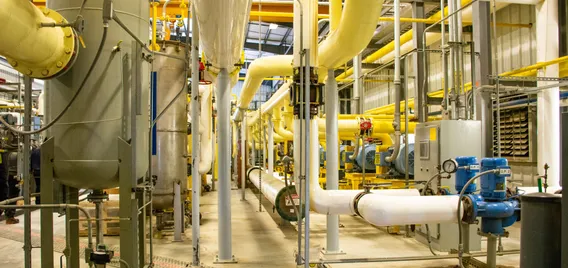
Biogas takes center stage
The buzz around biogas is only expected to keep building this year. The results of big acquisitions such as BP-Archaea and BlackRock-Vanguard Renewables will start coming into focus, while multiple projects from other companies also begin to come online. Many millions of dollars have been committed to landfill and anaerobic digestion projects, with industry observers seeing significant untapped potential.
The sector is also closely watching upcoming federal Renewable Fuel Standard changes. They could have notable financial implications for new and existing anaerobic digestion and landfill RNG projects, while also playing a role in the alternative fuel vehicle market. This shift — coupled with existing low-carbon fuel standards in certain states, and growing interest from ESG-focused companies and investors — is expected to drive further investment in the sector.
The climate benefits of capturing more methane before it gets emitted are clear, though it remains to be seen exactly if or how the current biogas boom will move the needle on organics disposal volumes.
Disposal is still a cheaper alternative in many areas and composting remains a less capital-intensive infrastructure option for organics recycling than digestion. Outside of regions with regulatory requirements (such as California, which is expected to ramp up SB 1383 enforcement this year), will investment and regulatory trends encourage more diversion of organic waste via systems such as anaerobic digestion? Or will a similar amount of organic waste still end up in landfills with more advanced systems to collect and monetize the RNG being emitted?


